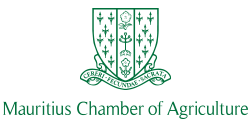Agriculture in the national economy
By 1755, sugar was being produced to meet the needs of the inhabitants of the colony and of its sister island Bourbon (now Réunion Island), and also to supply the many sailing ships which called at the island.
Sugar gained further in economic importance under British rule throughout the 19th century. The first steps towards producing sugar on an industrial basis were laid down and exports started as early as 1810 to the United Kingdom. With the diversification of export outlets and the granting of preferential tariffs on the UK market under the Imperial Preference System in 1919, together with improved methods of cultivation and production, sugar production in the colony continued to soar to reach 240,000 tonnes in 1925.
It is therefore not surprising that until the early 1970’s, agriculture remained by far the island’s most important sector and provided it with almost all of its foreign currency requirements. At that time, Mauritius was an agricultural economy and more specifically a monocrop economy because of the overwhelming importance of sugar.
The success of sugar on the island is not only attributable to the high adaptability of the sugarcane plant to local climatic, soil and topographic conditions but also, to a large extent, to the preferential trade agreements that the country, as a Commonwealth state and then as an ACP (African-Caribbean-Pacific) one, benefited successively from the United Kingdom and from the European Community.
Indeed, Mauritius has been able to make the most of the advantages derived from these trade preferences, namely the Sugar Protocol (1975) and the Special Preferential Sugar (SPS) Agreement (1995). The Sugar Protocol in particular, initially attached to the Lomé Convention to which has succeeded the ACP/EU Cotonou Agreement in 2001, has been granting to 16 ACP countries duty free access to the EU market for fixed quantities at a guaranteed price.
By providing Mauritius with a predictable and stable source of earnings over the years, the Sugar Protocol has been instrumental in developing the local sugar industry and in fostering the economic diversification of the island. Revenues from sugar exports have continually been re-invested into the sector and into other economic activities, some of which have today developed into major pillars of the Mauritian economy, namely manufacturing, tourism and finance. But the importance of sugar is still such that it will remain for quite some time the backbone of the economy and continue to play a vital role in the socio-economic fabric of Mauritius.
The way forward
Today, against a background of increasing trade liberalisation and stronger competition on the traditional markets to which Mauritius exports its main products (sugar and textile), namely the European Union and the USA, the country is sparing no effort for the successful restructuring and consolidation of its main economic sectors.
In that context, the agricultural sector and in particular its sugarcane cluster is to remain a mayor source of wealth for the Mauritian economy and one of the country’s main development pillar. In 2001 and 2003, Government launched respectively two major strategic plans for the agricultural sector, one for the sugar and the other for the non-sugar sectors, which are already in the implementation phase.
In 2005, in the light of unprecedented challenges confronting the sugarcane industry, namely the drastic cut in sugar prices on the EU market (36% by 2009), Government came forward with a Roadmap for the Mauritius Sugarcane Industry for the 21st Century, which has received broad consensus with the industry’s stakeholders. The course is thus set for a new development age for the Mauritian agricultural sector at large.


